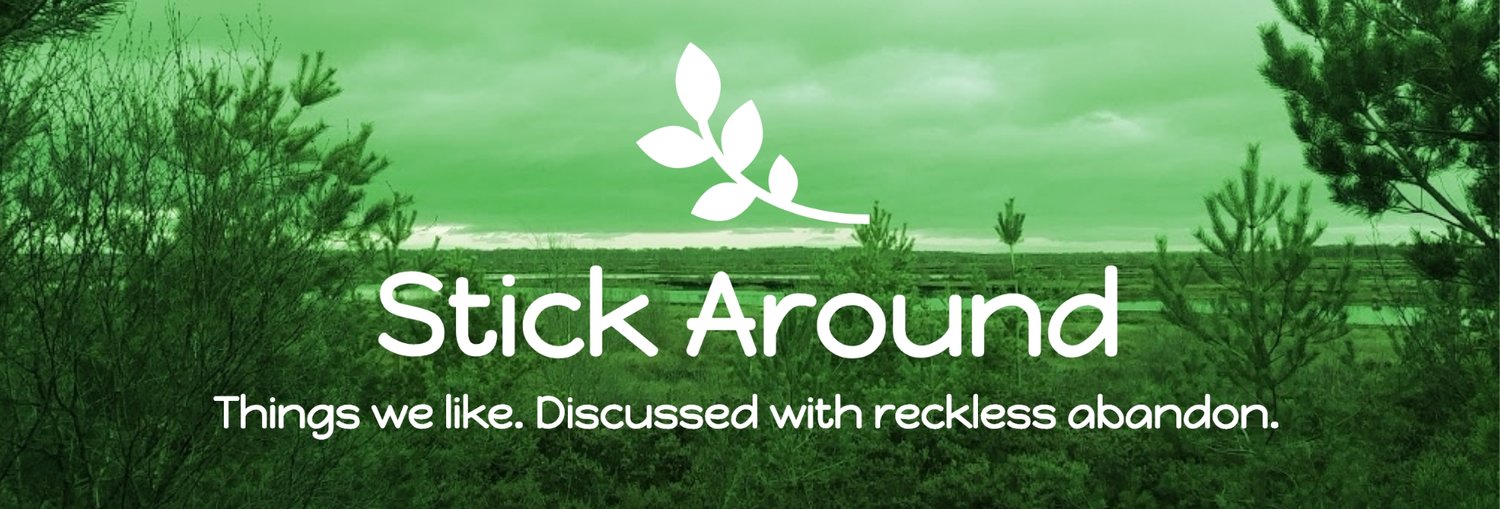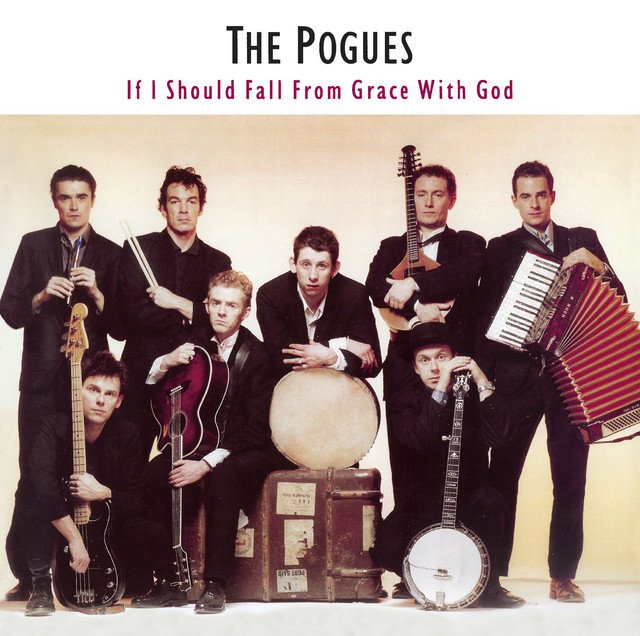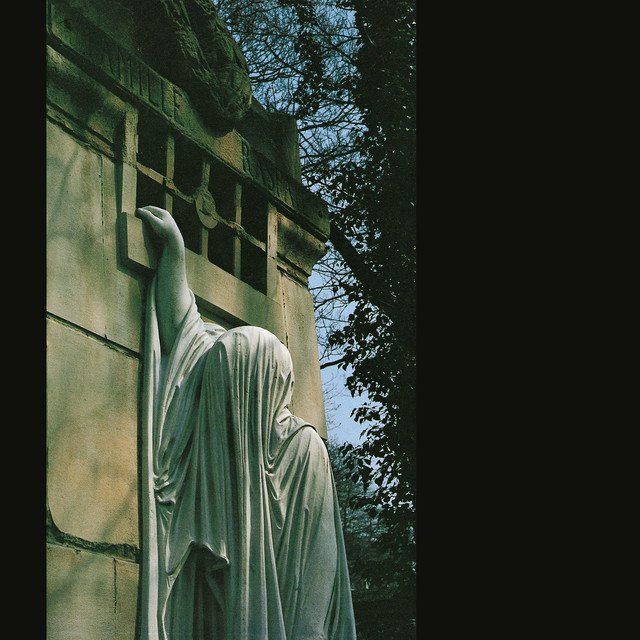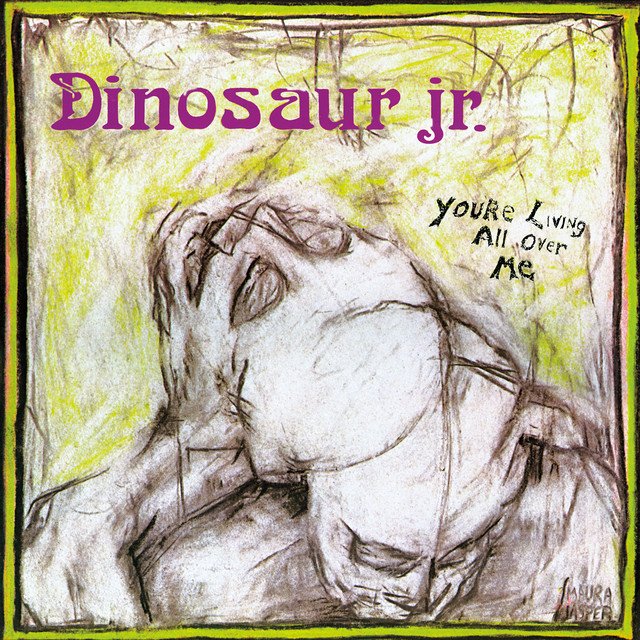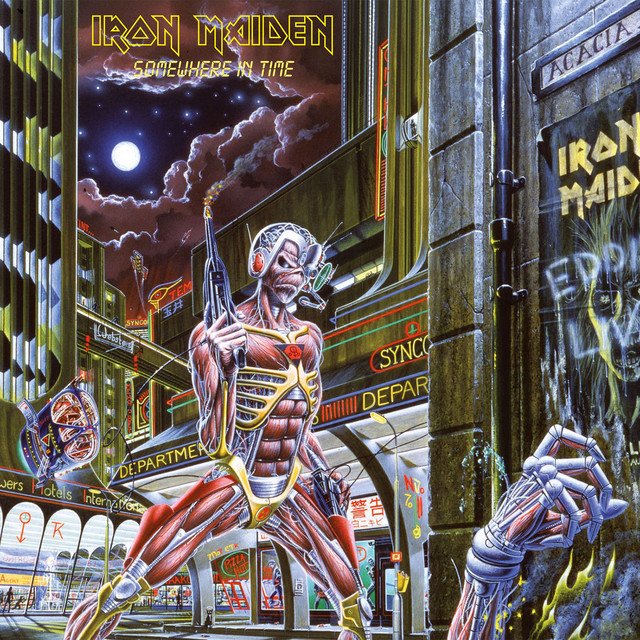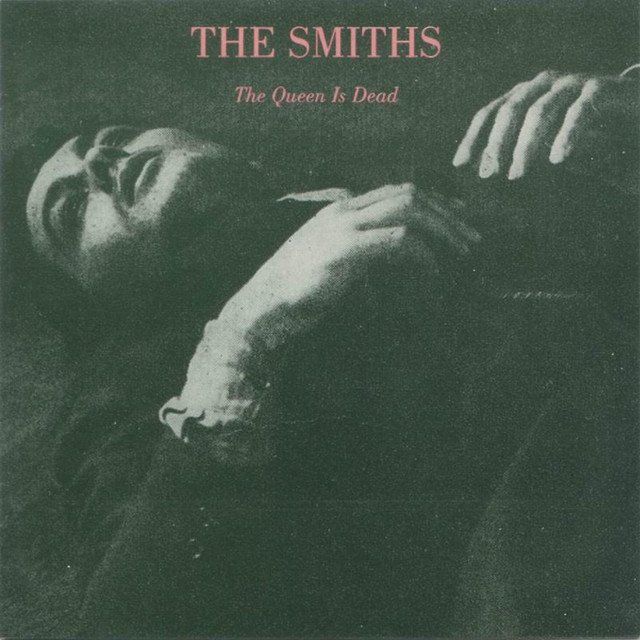1988 - Clive's Top Albums of Every Year Challenge
Over what will likely be the next few years I’m going to be ranking and reviewing the top 5 albums - plus a fair few extras - according to users on rateyourmusic.com (think IMDB for music) from every year from 1960 to the present. If you want to know more, I wrote an introduction to the ‘challenge’ here. You can also read all the other entries I’ve written so far by heading to the lovely index page here.
I had this post pretty much finished, and then my son was born 4 weeks ago and rather took over the schedule, which has been delightful. Anyway, I’ve managed to finish the last couple of reviews now as we plough through the 80s. In terms of world events in 1988: NASA scientist James Hansen warned congress of the dangers of the global warming and the greenhouse effect (that’s going well…), the US and Canada reached a free trade agreement, and Margaret Thatcher became the longes serving Prime Minister of the century in the UK.
Here’s what rateyourmusic.com’s users rate as the year’s top 5 albums:
#1 Sonic Youth - Daydream Nation
#2 Talk Talk - Spirit of Eden
#3 Pixies - Surfer Rosa
#4 Iron Maiden - Seventh Son of a Seventh Son
#5 Public Enemy - It Takes a Nation of Millions to Hold us Back
I’ll grab this lot from further down the list too:
#6 Metallica - ….And Justice for All
#7 Death - Leprosy
#8 Nick Cave and the Bad Seeds - Tender Prey
#10 Slayer - South of Heaven
#15 The Pogues - If I Should Fall from Grace With God
As usual, to add more female artists to the equation, I’ll be grabbing anything from 1986 from NPR’s list of the best albums of all time by female artists, as well as the same list as voted on by their readers. This year we’ve just got the one album to add:
Tracy Chapman - Tracy Chapman
Finally, I’ll also include these two from Pitchfork’s top albums of the 1980s,
Sade - Stronger than Pride
NWA - Straight Outta Compton
Ok, that’s plenty to be getting on with, let battle commence. As a bit of a spoiler, I think this might be the most albums with 9.5 and over we’ve had…
13. Straight Outta Compton
N.W.A
“Straight Outta Compton is the debut studio album by rap group N.W.A, which, led by Eazy-E, formed in Los Angeles County's City of Compton in early 1987.[3][4] Released by his label, Ruthless Records, on August 8, 1988, the album was produced by N.W.A members Dr. Dre, DJ Yella, and Arabian Prince, with lyrics written by N.W.A members Ice Cube and MC Ren along with Ruthless rapper The D.O.C. Not merely depicting Compton's street violence, the lyrics repeatedly threaten to lead it by attacking peers and even police. The track "Fuck tha Police" drew an FBI agent's warning letter, which aided N.W.A's notoriety, with N.W.A calling itself "the world's most dangerous group." - Wikipedia
Probably the most influential rap album of all time, and certainly that for gangsta-rap, Straight Outta Compton is one of those albums that hasn’t aged as gracefully (if graceful is a word that can go anywhere near this album) as some of its contemporaries. The opening three tracks are undeniable bangers, with the laid back funky production contrasting to the group’s lyrics, which seem intent on offending everyone in an undirected flurry of anger. Some of the misogony here is a little uncomfortable in 2022, but you can totally see why this album exploded onto the scene in 1988. Straight Outta Compton is brimming with attitude, and I’d say its the attitude that is more consistent than the musical intrigue as the album goes on. I probably sound down on it, but I’m not, it’s just that having listened to It Takes a Nation of Millions to Hold Us Back by Public Enemy, this doesn’t reach the same heights.
It’s still an essential listen from a historical perspective, with some of hip-hop’s most important tracks. Just prepare yourself for some filler, and more attitude than rapping skill.
Song Picks: Straight Outta Comtpon, Fuck the Police, Gansgsta, Express Yourself
7.5/10
12. Tender Prey
Nick Cave and the Bad Seeds
“Tender Prey is the fifth studio album by Australian rock band Nick Cave and the Bad Seeds, released on 19 September 1988 on Mute Records. Produced by Flood, the album was recorded during several sessions over the course of four months in West Berlin—where the band were based at the time of its release—and London and dedicated to Fernando Ramos da Silva.” - Wikipedia
Nick Cave himself said of Tender Prey: "It was a nightmare, that record. It is reflective of a group - particularly myself - who was just writing songs and there was no larger idea behind it. Sometimes some of the group was there, sometimes they weren't. I hear bad production and I hear bad performances as well." Cave later admitted that the album, "was made at a difficult time in my life when things were spiralling out of control in a lot of areas."
I think that statement gives you a good idea of what the album is. It’s a bunch of songs with Cave’s signature strong lyrics and gruff vocal performances, but without a particularly cohesive narrative or feel to them. I agree with Cave on the bad production at points, it sounds quite rough and thin on many of the tracks, but I don’t feel any of the instrumental performances are taking away from the songs at all. Yes, the performances are often simple and to the point, but this suits Cave’s songwriting in my opinion, never distracting from the core of his songs, which are always his lyrics and vocals.
Tender Prey feels earthy, rough, and like it was written in dusty old study at the back of a delapidated house. In short, it doesn’t sound like something from the 80s.
Song Picks: New Morning, Mercy Seat
8/10
11. If I Should Fall from Grace With God
The Pogues
“If I Should Fall from Grace with God is the third studio album by Irish folk-punk band the Pogues, released on 18 January 1988. Released in the wake of their biggest hit single, “Fairytale of New York", If I Should Fall from Grace with God also became the band's best-selling album, peaking at number three on the UK Albums Chart and reaching the top ten in several other countries.” - Wikipedia
If I Should Fall from Grace With God features my very favourite Christmas song (Fairytale of New York). Enough said. I kid of course, it takes more than that to make a good album, and thankfully there is a lot more here. Shane MacGowan’s vocals have gained some additional character and variety since the last album by the Pogues we had on this challenge, and it’s this, as well as the larger variety in the songs themselves, that makes this the better album for me. Though we’re still very much in the Irish-folk template here - which is no bad thing - there’s a great diversity in the instrumentation from track to track, with the band’s abundant energy evident from start to finish. Essentially, we’ve got all the positives of Rum, Sodomy and the Lash, but with it getting less tired by the end.
If We Should Fall from Grace With God is the pleasant screech of a car taking a corner too fast, full of the careless joy of youth.
Song Picks: Fairytale of New York, If I Should Fall from Grace with God, Thousands are Sailing
8.5/10
10. Seventh Son of a Seventh Son
Iron Maiden
“Seventh Son of a Seventh Son is the seventh studio album by English heavy metal band Iron Maiden. It was released on 11 April 1988 in the United Kingdom by EMI Records and in the United States by Capitol Records. Like The Number of the Beast (1982) and later Fear of the Dark (1992), The Final Frontier (2010), and The Book of Souls (2015), the album debuted at number one on the UK Albums Chart. The lead single "Can I Play with Madness" was also a commercial success, peaking at No. 3 in the UK Singles Chart.” - Wikipedia
Iron Maiden goes prog rock??? Count me in. More complex song structures, and a genre that provides a fitting home for Bruce Dickinson’s dramatic vocals makes this my favourite Iron Maiden record we’ve had so far. The production is crystal clear and somewhat ahead of its time, and the guitar riffs are consistently pulversising. It’s just really damn solid and enjoyable.
Song Picks: Seventh Son of a Seventh Son, Can I Play With Madness, Moonchild
8.5/10
9. Leprosy
Death
“Leprosy is the second studio album by American death metal band Death, released on August 12, 1988, by Combat Records. The album is notable in its different tone and quality from the band's 1987 debut, it is the first example of Scott Burns' work heard on many of the death metal and grindcore albums of that era. The cover is featured in Metal: A Headbanger's Journey. It is the first album to feature drummer Bill Andrews and the only one to feature guitarist Rick Rozz.” - Wikipedia
Death is probably the most death metal name of all time, and the album name Leprosy isn’t far behind either. Appropriately, I’d say this is the first time we’ve had some straight death metal on the challenge, and it’s glorious. Not a genre I’m overly familiar with, which will change by the end of this challenge I’m sure, but this thing is everything I’d want from a death metal album; obliterating riffs, ape like drumming, and pretty much every song being about death and disease. Chuck Schuldinger’s roars are monotone and almost incomprehensible, and more of a percussive instrument than a melodic one, but they add a great sense of anger and urgency to the cacophony around them.
Leprosy hits hard.
Song Picks: Forgotten Past, Choke On It, Leprosy
8.5/10
8. South of Heaven
Slayer
“South of Heaven is the fourth studio album by American thrash metal band Slayer, released on July 5, 1988 by Def Jam Recordings. The album was the band's second collaboration with producer Rick Rubin, whose production skills on their previous album Reign in Blood (1986) had helped their sound evolve. Given the frenetic pace of Reign in Blood, Slayer made no attempt to top it on South of Heaven; rather, the band offset and complemented Reign in Blood by deliberately slowing the tempo down on South of Heaven, as well as by utilizing undistorted guitars and toned-down vocals.” - Wikipedia
I’ve been a vocal Rick Rubin critic in the past, but his production was spot on for Slayer’s Reign of Blood, which I loved, and it’s perfect once again here. There’s a level of punchiness to the sound that I’ve not heard in heavy music up to this point. The drums are so compressed they almost sound electronic, but it works. On the songwriting front, I don’t feel the album has slowed down that much from Reign in Blood, though there is the odd slower section thrown in. We’ve still got the typical strong, speedy guitar riffs, though they seem a little fuzzier this time, and Dave Lombardo’s drums are once again like a really powerful Swiss watch.
South of Heaven is another cracking album from what is becoming one of my favourite heavy bands of the decade.
Song Picks: South of Heaven, Spill the Blood, Silent Scream, Ghosts of War
8.5/10
7. Daydream Nation
Sonic Youth
“Daydream Nation is the fifth full-length studio album and first double album by American alternative rock band Sonic Youth, released on October 18, 1988. After Daydream Nation was released, it received widespread acclaim from critics and earned Sonic Youth a major label deal. The album was ranked high in critics' year-end lists of 1988's best records, being voted second in The Village Voice's annual Pazz & Jop poll. Daydream Nation has since been widely considered to be Sonic Youth's greatest work, as well as one of the greatest albums of all time, specifically having a profound influence on the alternative and indie rock genres.” - Wikipedia
Leaving Sister’s penchance for more conventional song structures behind, Daydream Nation sees Sonic Youth embracing the more jam orientated element of their sound, which had always been evident in their live performances. What results is something more sprawling than their previous album, while still being more accessible than their earliest work. We’ve got detuned guitars, a complete disregard for any musical scales and often monotone vocals resulting in a dissonant cacophony driven along by Steve Shelley’s clockwork drums. Noonday Dream is a wall of sound that I found myself crashing into on my first few listens, but the more I listen, the more it softens, and I’m optimistic that one day it’ll absorb me and spit me out the other side filled with all those who cite this as one of the best albums of all time. It’s only a matter of listens.
Song Picks: Teenage Riot, Silver Rocket, The Sprawl
8.5/10
6. Stronger Than Pride
Sade
“Stronger Than Pride is the third studio album by English band Sade, released by Epic Records in the United States on 5 April 1988 and in the United Kingdom on 3 May 1988. In September 2018, Pitchfork placed the album at number 37 on its list of "The 200 Best Albums of the 1980s" - Wikipedia
I really liked 1984’s Diamond Life, but this is even better. Stronger Than Pride slows everything down to a gentle stroll. There’s not necessarily more space, as a lot of the productions here are still quite dense, but there’s more time. The bass ambles beautifully throughout the album and the guitar flirts celestially with the sax on Haunt Me, and tentatively strums and plucks to the groove on Turn My Back On You like the shy dancer in the corner hesitantly approaching the danceflloor. Throughout the record, lead singer Sade Abdu’s vocals sound like she’s singing from her bed.
Stronger than Pride is a sumptuous mix of lovely production, tasteful instrumentation, soothing melodies, meditative repetition and bass like the world’s most comfortable sofa. I’m in love with it.
Song Picks: Love Is Stronger Than Pride, Haunt Me, Nothing Can Come Between us
9.5/10
5. Tracy Chapman
Tracy Chapman
“Tracy Chapman is the debut album by American singer-songwriter Tracy Chapman, released on April 5, 1988, by Elektra Records. The album was recorded at the Powertrax studio in Hollywood, California. In 1987, Chapman was discovered by fellow Tufts University student Brian Koppelman. He offered to show her work to his father, who owned a successful publishing company; however, she did not consider the offer to be serious. After multiple performances, however, Koppelman found a demo tape of her singing her single "Talkin' 'bout a Revolution", which he promoted to radio stations, and she was eventually signed to Elektra Records. The album received commercial success in most of the countries it was released, making it to the top of the charts in many countries, including Austria, Canada, New Zealand, Switzerland, Denmark, and the United Kingdom. It peaked at No. 1 on the US Billboard 200 and was certified six-times platinum by the Recording Industry Association of America (RIAA), with sales exceeding over six million copies in the United States alone. ” - Wikipedia
How, in an era of the industry where women - particularly women with acoustic guitars - were treated with a sexist ambivelance did Tracy Chapman, a Black woman with an acoustic guitar, manage to make it? Not only that, but how did she manage to make one of the best selling albums of all time?
As outlined in the excellent Pitchfork review of the album, Chapman’s success is often attributed to her performance at Nelson Mandela’s 70th birthday benefit concert, where the fact Stevie Wonder couldn’t perform due to a technical issue meant she got a second set. There’s no more appropriate place for someone as socially conscious as Tracy Chapman to have ‘made it’, but you get the feeling she’d have made it anyway, it was written in the stars, and in her quiet confidence.
Coming out of nowhere, she recorded the most accomplished, mature, well written, and beautifully performed acoustic guitar focused album of the decade. An unparalleled knack for finding emotive melodies, combined with effortless lyrics of social and political injustice and a voice as distinctive as it is brilliant create something truly magical. We’ve got songs about domestic abuse, oppression, and racism and yet there’s always more than a candle of hope in them, thanks to Chapman’s boundless optimism. She gets the fast car, others will get their comeuppance, things are bad - but they’ll be alright.
“Poor people gonna rise up/And get their share” she sings on the rousing album opener Talkin’ Bout a Revolution. I’m not convinced they ever will before this world turns into a post-apocalyptic hellhole, but it stills warms my heart to hear it sung with such convincing prescience.
Song Picks: Talkin’ About a Revolution, Fast Car, Baby Can I Hold You
9.5/10
4. Surfer Rosa
Pixies
“Surfer Rosa is the debut studio album by the American alternative rock band Pixies, released in March 1988 on the British label 4AD. It was produced by Steve Albini. Surfer Rosa contains many of the elements of Pixies' earlier output, including Spanish lyrics and references to Puerto Rico. It includes references to mutilation and voyeurism alongside experimental recording techniques and a distinctive drum sound.” - Wikipedia
Apparently, I reviewed this album back in 2015 on rateyourmusic.com and said “I love the raw energy and craziness of these songs. The band were clearly having a lot of fun and there's some real gems on here. I can't say I love the album as much as a lot of people do, but I'm certainly a fan.”, giving it 3 and a half star rating.
Clearly I was a musical buffoon in 2015, as Surfer Rosa is a magical combination of complete chaos and catchy melodies. Black Francis’ vocals are unhinged, and yet infintely listenable. The drums have more reverb than any of the other instruments it seems, with Joey Santiago’s guitar having so little on it at times that it sounds as if his buzzing riffs are happening in your head. Those riffs by the way are completely simple and yet also some of the best rock riffs ever written. Find me a better riff than the iconic one on Where Is My Mind?, one of the greatest songs of all time not just the 80s, and I’ll eat my hat (which is filthy by the way).
Steve Albini has long been one of my favourite producers, and we’ll get to Nirvana’s In Utero, perhaps his most famous production, in 1993. He has an ability to capture the live energy of a band better than any producer out there, and that is largely what leads to the success of Surfer Rosa. Other producers would probably have tried to tame the rough edges of the performances here, but Steve Albini doesn’t. He accentuates the drums to sound like they’re playing in a basement with no acoustic treatment, and manges to make every instrument clear and yet perfectly blended at the same time.
Surfer Rosa is the capturing of a band seemingly wrestling with the infinite chaos of the big bang, and trying to tame it into something resembling catchy pop and rock numbers. What results is musical perfection with relentless energy, just enough rule following to make it familiar, and an unpredictability and sense of fun that make it unlike anything else.
Song Picks: Bone Machine, Break My Body, Where Is My Mind, Gigantic
9.5/10
3. …And Justice for All
Metallica
“...And Justice for All is the fourth studio album by American heavy metal band Metallica, released on September 7, 1988 by Elektra Records. It was the first Metallica album to feature bassist Jason Newsted, following the death of their previous bassist Cliff Burton in 1986, although his songwriting contribution still featured posthumously in one song.” - Wikipedia
Rather rudely and famously, you can barely hear the new bassist on this album. Though if you really want to hear the excellently titled ….And Justice for Jason, a version with Jason’s bass turned up, you can find that here. The version we’re talking about though is abrasive and thin, it obliterates the most sensitive frequencies of your hearing, with no bassy warmth or high end sparkle to counteract it. As it turns out though, this suits the album’s sound perfectly, and makes it stick out from the era’s other metal offerings. Hetfield’s vocals have worn into a pleasing growl, and the guitar riffs are as good as they’ve ever been. The album consists of 9 lengthy songs that switch between time signatures on a dime, addressing political and legal injustice, something that Ulrich terms as the band’s ‘CNN years’ as they got many of the record’s lyrical themes from the channel.
The song topics are more punk than metal, and the song structures are bordering on prog. ….And Justice for All is a blistering, ear shattering attack full of exciting riffs, anger at the world, and unpredictable intrigue. It’s hard to keep a listener interested in an album for over an hour, but this record has the skittish impatience to keep you on your toes throughout. It’s my favourite Metallica album, and a contender for my favourite metal album of all time.
Song Picks: And Justice for All, Harvest of Sorrow, Eye of the Beholder, One
10/10
2. It Takes a Nation of Millions to Hold Us Back
Public Enemy
“It Takes a Nation of Millions to Hold Us Back is the second studio album by American hip hop group Public Enemy, released on June 28, 1988, by Def Jam Recordings and Columbia Records. It was recorded from 1987 to 1988 in sessions at Chung King Studios, Greene St. Recording, and Sabella Studios in New York. - Wikipedia
Nations, as I’m going to call it for ease, is a powerful, political statement brewing with anger. It features a larger vocabulary than any of the hip-hop we’ve had so far, and it also features intricate cadence and some of rap’s most powerful voices, none more so than Chuck D. Sometimes you read a review of something and it puts your own feelings better than you could (in my case this happens a fair amount) and so here’s a short paragraph from Pitchfork’s entry for this album into the top 200 albums of the 1980s (in which it came 6th):
“In 58 minutes, Public Enemy tackle everything from the crack epidemic (“Night of the Living Baseheads”) to state surveillance (“Louder Than a Bomb”); they take aim at the media’s whitesplaining of rap (“Don’t Believe the Hype”) and challenge the fallacy that what you hear and see on TV is gospel truth (“She Watch Channel Zero?!”). What they addressed was timely, but how they addressed it was revolutionary.”
The production is still somewhat ‘old school’, that is to say more unrefined than today’s hip-hop, but it’s already getting more complex than last year’s offerings, and you only have to look at the list of samples for each song to know that this is busy. More than just busy though, Nations is a masterclass in hooky samples. On She Watch Channel Zero?! they pretty much invent rap metal by sampling a superb Slayer riff from Angel of Death and dynamically and angrily rhyming over the top, on Rebel Without a Pause there’s a now iconic, long rotating squeak and on Louder Than a Bomb and Cold Lampin’ With Flavor we have some of the grooviest samples in history. Nations knows that great hip-hop is as much in the beats as it is in the lyrics and vocal rhythms, and it’s an absolute masterclass in both. Hip-hop hasn’t just arrived, it has spun into the station like the Tasmanian Devil.
Song Picks: Don’t Believe the Hype, Cold Lampin’ With Flavor, Rebel Without a Pause, She Watch Channel Zero?!, Louder than Bomb
10/10
1. Spirit of Eden
Talk Talk
“Spirit of Eden is the fourth studio album by English band Talk Talk, released in 1988 on Parlophone Records. The songs were written by vocalist Mark Hollis and producer Tim Friese-Greene and the album was compiled from a lengthy recording process at London's Wessex Studios between 1987 and 1988. Often working in darkness, the band recorded many hours of improvised performances that drew on elements of jazz, ambient, blues, classical music, and dub. These long-form recordings were then heavily edited and re-arranged into an album in mostly digital format.” - Wikipedia
Mark Hollis, Talk Talk’s ‘frontman’ is often referred to as a shining example of art over commercialism, and - based on his decision to retire from music in 1998 to spend time with family, which he stated he’d find impossible while touring, you could argue he’s a shining example of a family man too. Maybe he’s just a shining example, period? I don’t know the guy, but it’s hard to believe that anyone that could make something as quiet, as contemplative, as majestic, as empathetic, hell as god damn beautiful as Spirit of Eden could be anything but a great human. The entirety of the album was recorded in darkness, largely composed of long jams recorded together, it’s never in a rush, and you can almost hear the lightbulbs sizzling on in the musicians’ heads as they come up with a new riff, a rhythm, a tone to repeat meditatively. When the music explodes from its slumber, as on Desire’s crescendo, it does so in a way that drowns out Hollis’ vocals, as his thoughts struggle through the anxious din. It’s also a clear pre-cursor to that genre of crescendos - post-rock - which was to appear soon.
Spirit of Eden has the transportative quality of Eno’s best ambient work, but with more emotional heft. Someone on Radio 6 the other day said that albums were like a place, and I like that idea. Spirit of Eden is like a cosy bedroom with one of those ceiling lights with millions of stars, only it’s 3D and the room is floating through them. It’s a place of reflection, of warmth, of empathy. I find it pretty difficult to call it anything but a masterpiece.
Song Picks: Desire, The Rainbow, I Believe in You
10/10
